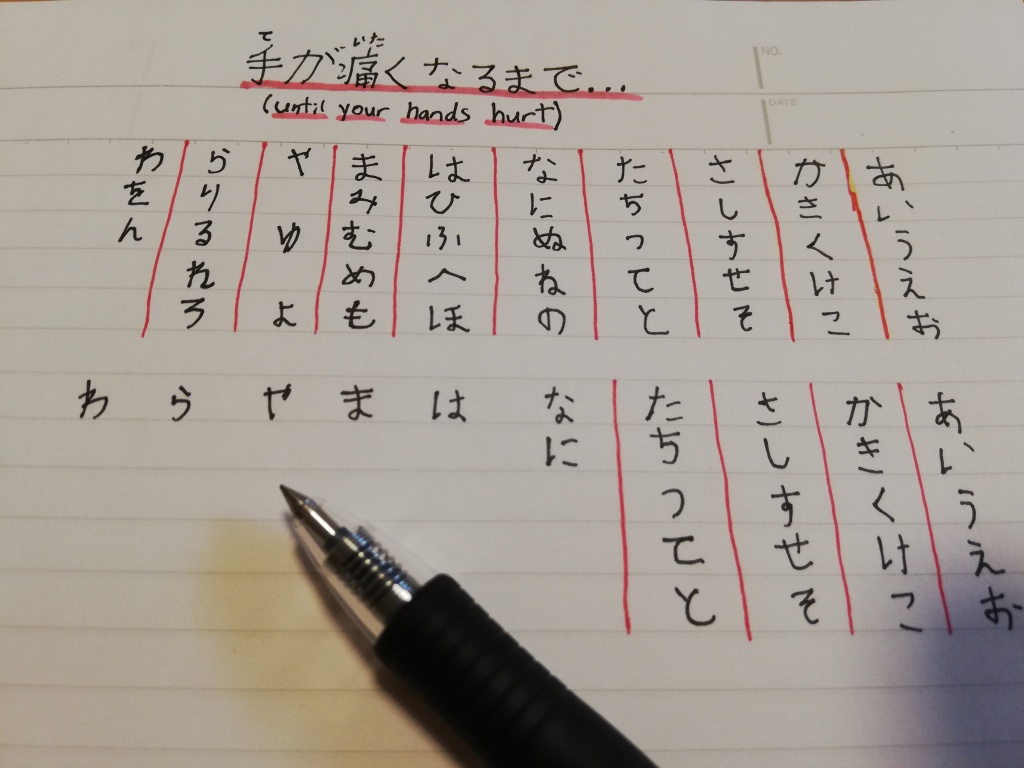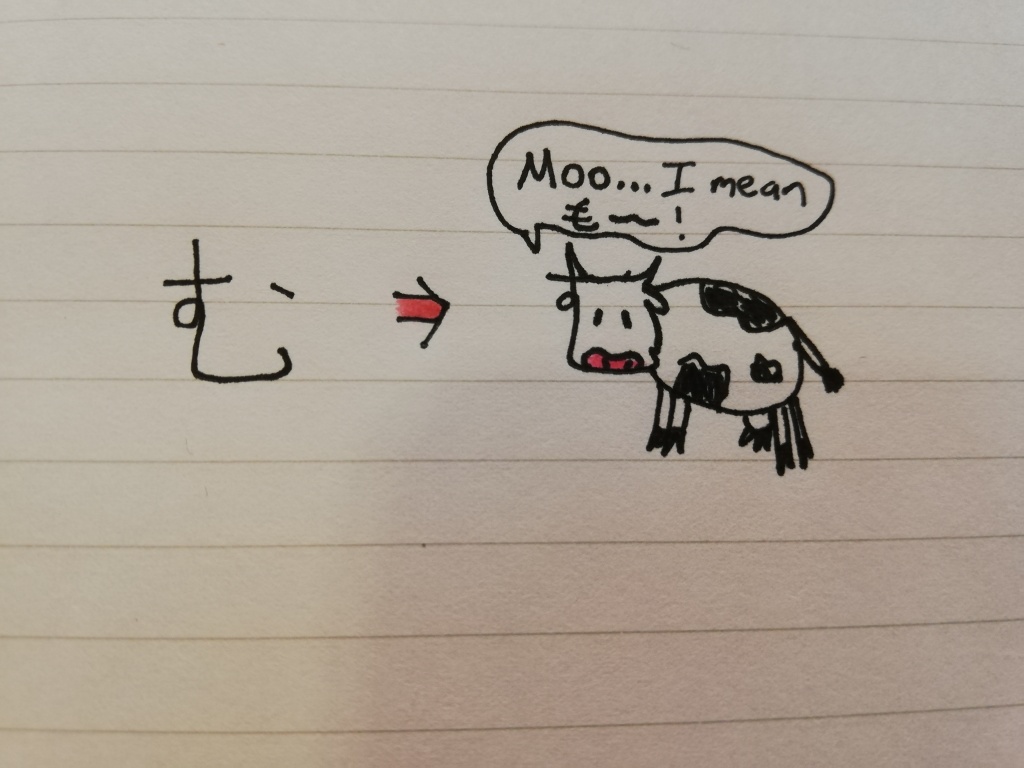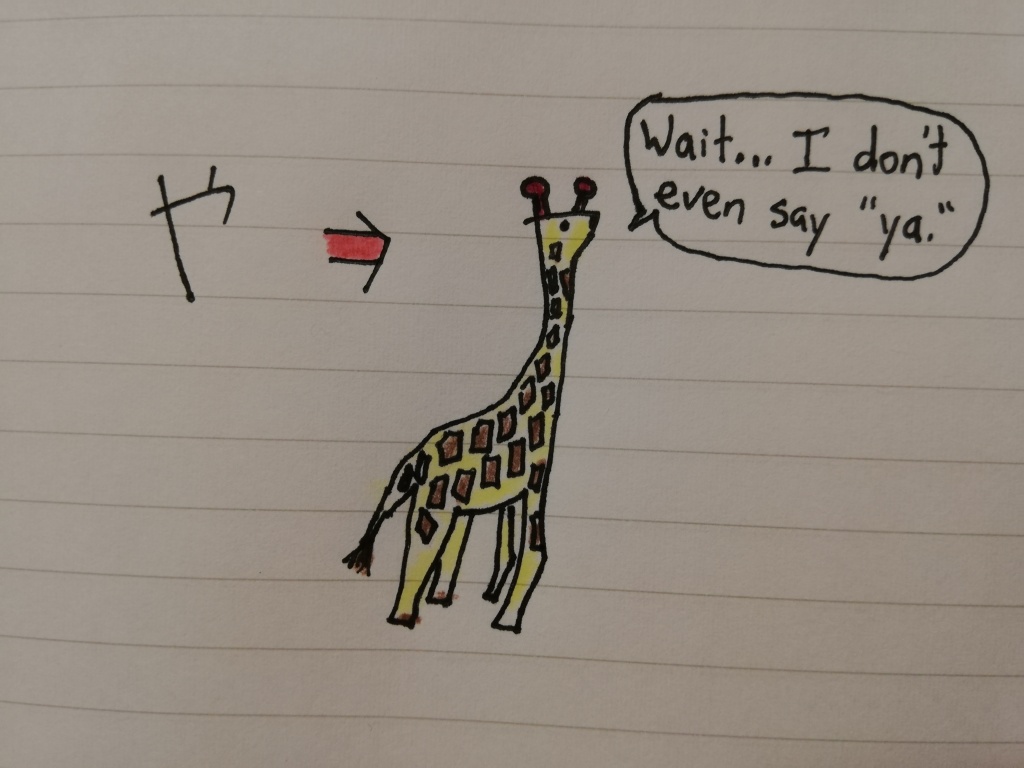If there’s one thing that intimidates a lot of people about learning Japanese, it’s the writing system. The first time I looked at hiragana, I was convinced it was impossible to learn. I just kept putting it off and telling myself that I’d get to it eventually…
When I found the right strategy though, and got to work with it, I learned to read and write hiragana in one day.
That’s right, just one.
Learning hiragana can be fast and easy. If you follow the steps I outline below, you’ll be reading and writing hiragana like a pro by this time tomorrow.
Hiragana – The Basics

Hiragana is what’s called a “syllabary.” This means that unlike English letters, each character stands for a single syllable sound all of the time (there are a few exceptions, but we’ll get there later).
There are 46 hiragana in modern Japanese. This means that if you just memorize the symbols and the sounds that go with them, you’re golden.
Memorizing 46 characters still sounds hard? Here are two facts about hiragana that should be encouraging.
Encouraging Fact #1: Hiragana follows a regular pattern.
The first sounds on the chart are these:
- あ (a) – like the “a” in “alter”
- い (i) – like the “ee” in “teeth”
- う (u) – like the “oo” in “loop”
- え (e) – like the “ai” in “aim”
- お (o) – like the “oa” in “soap”
After this, the pattern just basically repeats with different consonant sounds added to the front.
- さ (sa) – like “salt”
- し (shi) – like he and “she”
- す (su) – like “Boy Named Sue” by Johnny Cash
- せ (se) – like “say”
- そ (so) – like “sew”
Encouraging fact #2: 3 year olds can learn it.
Because hiragana is actually pretty easy to learn, it’s common for kids in Japan as young as 3 and 4 to be able to read it.
Granted, it probably takes them more than a single day to learn it but if thousands of preschoolers can do it, so can you!
Why start with hiragana?
In my travels, I’ve come across a lot of people who say things like “I just want to learn how to speak Japanese, I don’t really care about reading.”
At first, this seems to make sense, but it’s all wrong. Even if your goals aren’t heavy on reading and writing, there are three reasons everyone should master hiragana before moving on to anything else.
Reason #1: Learning hiragana improves your pronunciation.
When you learn hiragana, you learn the sound system of Japanese. When you learn a new word, you are way more likely to read it the way it is supposed to be read rather than butchering the romanized Japanese.
Case in point:
- sake: sa-kay NOT sa-key
- karate: ka-ra-tay NOT ka-ra-tee
- Tokyo: to-kyo NOT to-key-yo
Need I go on?
On top of this, English is a “stress timed” language. This means that certain syllables of the words in a sentence that carry the most meaning get said longer, louder, and with more emphasis. All the other stuff tends to get smashed together. Take this example:
Why do you want to learn Japanese?
WHY dayawanna LEARN japaNEse?
Japanese, on the other hand, is what’s called a “syllable timed language.” This means that every syllable in a sentence gets roughly the same emphasis and things get smashed together a lot less.
One of the biggest mistakes English speakers make when learning Japanese is to put English stress patterns where they don’t belong. In fact, when Japanese people mock the foreigner accent, this is exactly what they do.
Learning hiragana will help you to remain conscious of the syllable breaks and focus on hitting them more or less evenly when you speak.
A bunch of research shows that in English, accurate sentence level stress patterns are the number one thing that increases the chances someone will understand what you said.
I’m not sure if the same is true for Japanese, but I know that making even minimal effort to improve your pronunciation will make a big difference in how people perceive your Japanese ability level.
Reason #2: Learning hiragana unlocks authentic materials.
Authentic materials are materials made for native speakers of a language. There are a number of Japanese materials that use romaji throughout. How many books made for Japanese people use romaji? I’ll go out on a limb here and say zero.
The great thing about authentic materials is that they are, well, authentic. While books made for learning Japanese can be really useful, if you dig into authentic materials you can start to use Japanese to communicate and gain information. This is what languages are meant for and this is what language learning should be all about.
As you progress, you can start to read about things that interest you. You’ll be killing two birds with one stone using Japanese to learn rather than just learning Japanese. Once you start to do this, you’ll see massive gains in terms of both vocabulary and grammar development.
Reason #3: Being able to read hiragana is just plain cool.
One thing I love about Japanese is that it is so difficult and distant from English. Think about how cool it will be when your friends or family look over your shoulder when you’re studying Japanese and see a page full of what appears to be crazy, incomprehensible symbols.
Besides being a great party trick, learning to read hiragana successfully is incredibly motivating. It is one of the single biggest wins you can experience in your Japanese learning journey in the shortest amount of time.
Step 1: Sparta Cards
If you want to learn hiragana in a single day, the first thing you need is a flashcard deck. Each card should have the hiragana symbol on the front and the English phonetic reading on the back.
You can use digital or paper cards for this. Digital hiragana flashcard apps are pretty easy to find. Whichever you choose, it’s best to keep it simple. You just need the basic 46 characters with the reading on the back.
Writing them out is nice because the act of making the cards will help you remember a little bit. An app is nice because it is quick and you can take it anywhere. I personally used a simple flashcard app.
Why is it called “Sparta Cards?” In Japan, “Sparta” is often used as an adjective to mean hardcore or strict. You see it in words like スパルタ教育 (suparuta kyouiku) or a Sparta-strict education.
What makes these flaschards so Sparta? The rules are simple. Start with the first card and go through it in order, seeing if you can remember the reading. It is best to actually say it out loud to keep yourself honest and practice pronunciation but in your head will also work just fine.
If you can’t remember one, start over from あ. Even if you’re on the very last card and can’t quite come up with it, start over at the very beginning every time.

By doing this you get a ton of extra repetition and the hiragana that are easy for you become even easier. When you do make a mistake, starting over from the beginning will motivate you to remember the one that gave you trouble. It also gives you just enough time between the first attempt and the second to see if you really got it down.
Once you can manage to get through the deck in order a few times in a row, you are ready for the next level. Shuffle the cards and start the game again. The rules are the same only this time you can’t rely on the predictable pattern.
A shuffled deck is considerably more difficult than an ordered one. This step may take you a while but if you keep at it, you will clear the shuffled deck. Once you do, shuffle again and try again. If you can get through two or three shuffled decks, congratulations! You just taught yourself to read hiragana!
Step 2: Write until your hands hurt

When you have nailed down the hiragana reading using the flashcards, you’re ready to test your productive knowledge. First use a chart to get familiar with the stroke order of each character. Generally, they go left to right, top to bottom, and horizontal lines come before vertical.
Copy the hiragana chart in order a few times in a notebook. When you think you’re ready, test yourself. Try to write it without looking. If you’ve already mastered the flashcards, this is actually not as difficult as it might sound.
It’s alright to cheat a little here and take a look then keep going if you forget one. Just keep at it until you can write everything without looking. Mastering this will not only help you with writing later on, it will help cement your recognition and help you read better as well.
Visual hooks and mnemonics
Another trick that can help you along as you go through the flashcards and the writing is to come up with mnemonics.
As you look at the hiragana, think about what they look like to you. If you can make some kind of connection with the sound it makes, that’s the best. My all time favorite is that む looks like a cow which says “moo,” (but actually says も in Japanese).

Get creative and find something that sticks for you. Even if it’s not directly related to the sound, having something in your mind to make that character distinct will help you remember it. For example, realizing that や looked like a giraffe has nothing to do with the sound it makes but helped it stick nonetheless.

Hiragana: extra features
Memorizing the basic 46 characters should be enough to get you started reading and writing hiragana. There are a few extra things you need to know.
Extra sounds
While hiragana mostly just make the sound that they make, there are two exceptions. The first is は which can be read “ha” when it is in words but “was” when it is used as the grammatical topic marker particle. This is super common as it is used in almost all declarative sentences so you will see it all the time.
The other one is へ which is usually “he” but is read “e” when it is used as a grammatical particle for talking about direction.
Ten-ten
Sometimes you will see two dots like quotation marks on the top left side of hiragana. This is called “ten-ten.” Ten-ten adds voice to unvoiced consonant sounds.

Maru
In addition to “ten-ten” there is sometimes a small circle in the top right corner. This is called a “Maru” (which just means circle). It only works with the は column and changes the /h/ sound to a /p/ sound.
Small Hiragana
When you see a small hiragana, it means to blend the two sounds into a single syllable. For example, ひよ (hi yo) becomes ひょ (hyo).
This is most common with やゆよ but you sometimes also see it with あいうえお.
It’s probably a good idea to include the extra readings for は and へ on your flashcards. As for ten-ten, maru, and small hiragana, it’s not really necessary. Adding them to the deck will just make it long and complicated when it is pretty easy to just pick up these basic rules as you start to use hiragana.
Use it or lose it!
Alright, it’s time for a disclaimer. If you stick with the flashcards and the writing practice, you will learn hiragana in one day. If you’re quick it may even be a couple hours. With language though, it’s use it or lose it. Hiragana is no different.
If you follow the method I have described here, the hiragana is stored in your short term memory. You can remember it all today but if you don’t touch it, it may be gone tomorrow. You need to move this information over to your long term memory and the only way to do that is to access it frequently over time.
One way to do this is to make a daily habit of going through your flashcard deck and writing the hiragana chart. It is pretty easy and quick once you have covered the initial memorization.
Revisiting the memorization tactics will keep you sharp but eventually it gets a little boring. An even better way to make sure you keep accessing that fresh hiragana knowledge is to put it to use!
Check out some good Japanese picture books or find real things from Japan (or images of them) like packages or signs that have hiragana on them.
You can also practice writing hiragana on a regular basis when you take notes studying and learn new words. Before long, reading and writing hiragana will become automatic and you won’t even have to think about it!
So there you have it. With the right strategies and a little bit of hard work, learning hiragana in one day is totally possible. If you found this article helpful, be sure to check out my other posts and tutorials.
ひらがながんばってください!
